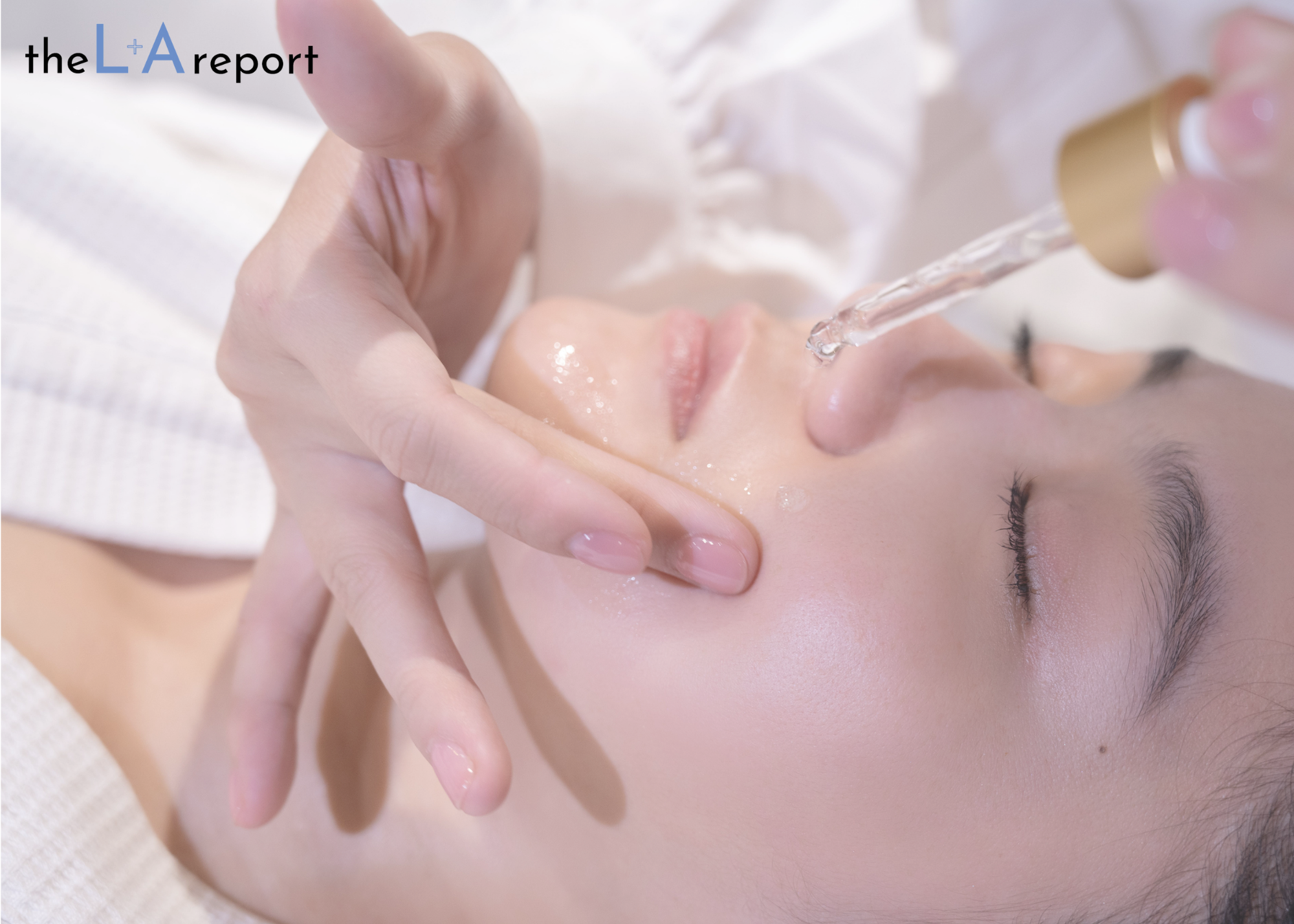Best exfoliation by skin type for maximum hydration? Is that really a thing?
When clients think about hydration, they often leap to rich moisturizers, hydrating serums, or luxurious facials brimming with nourishing ingredients. But for those in the esthetics field, we know the secret to proper hydration begins with something counterintuitive: exfoliation.
It’s a simple equation. Even the most potent hydrating ingredients can’t perform their best without an adequately prepped canvas. Layers of dead skin cells, built-up sebum, and environmental debris act as barriers, blocking your products from penetrating where they’re needed most. These barriers impede the much-needed hydration from entering the cells where it is needed most.
The solution? Thoughtful, tailored exfoliation. Targeted at that client’s needs, goals, and lifestyle.

January 2025 L+A Report
7 Medical + Spa Skincare Winter Hydration Tips
We’ve got 7 hydration suggestions for your medical or spa skincare business. For 2025 medical and spa skincare professionals can offer home care and in clinic treatments that can boost the winter hydration levels of their clients’ skin!
The Role of Exfoliation in Hydration
Exfoliation is more than just smoothing out rough texture or giving clients that immediate glow (though it does that beautifully). It’s about clearing the path for active ingredients. Hydrating agents like hyaluronic acid, peptides, and ceramides thrive where they can sink into the skin and do their job. Without exfoliation, these ingredients sit on the surface, underperforming. This means that those powerhouse ingredients cannot do their job, and for your client, that can mean not seeing the results that you, as the professional, have promised.
From a technical perspective, exfoliation removes the stratum corneum’s excess buildup, enhancing the epidermis’s permeability. Think of it as removing the bark from a tree to allow water to reach the core.
4 Best Exfoliation Types To Choose From For Your Client
Not all exfoliation methods are created equal. The trick is to tailor the approach to the client’s unique skin type and condition.
1. Chemical Peels
- Best for: Clients with uneven texture, pigmentation, or fine lines.
- How they help: AHAs like glycolic and lactic acids dissolve the bonds between dead skin cells, while BHAs like salicylic acid penetrate and clear clogged pores. When adequately selected, chemical exfoliation can deliver controlled and even exfoliation.
- Peel strength, additional boosting ingredients, and protocol are essential when aiming to provide the best results for your clients.
- Peel technology has advanced significantly, and there are so many elegant options that require little to no downtime while still providing significant results and a very comfortable treatment.
2. Hydrodermabrasion
- Best for: Dehydrated, dull skin.
- How it helps: Hydrodermabrasion is a dual-action treatment that exfoliates and infuses hydration simultaneously. It’s particularly effective for clients who need a gentle, hydrating touch while removing impurities.
- Depending on the device being used, hydrodermabrasion’s exfoliating properties can be increased or decreased depending on the serum being used, the number of passes being done, and the tip that has been selected.
- Hydrodermabrasion provides a dual action in exfoliation that combines physical and chemical exfoliations at the same time.
- These multiple actions at once ensure a gentle and thorough exfoliation method.
3. Enzymatic Exfoliation
- It is best for Sensitive or rosacea-prone skin, but depending on the enzymes selected, it can work well on all skin types.
- How it helps: This method uses natural enzymes from fruits like papaya or pineapple to provide soft exfoliation, which is ideal for delicate skin types that can’t tolerate acids or abrasives.
- Just like peel technology has advanced, Enzyme technology has as well. Enzymes that can exfoliate like a peel are now being used in our field. Be aware when selecting the enzyme, especially for delicate, sensitive, or reactive skin.
4. Physical Exfoliation
- Best for: Thick, oily, or acne-prone skin.
- How it helps: Microdermabrasion or manual scrubs can be effective but should be used carefully to avoid microtears in the skin. Continually assess the skin’s resilience before recommending physical exfoliation.
- When using Microdermabrasion, specifically with a diamond tip, be aware of the grit being selected and the tip’s shape. Those factors will affect how deep the exfoliation is. Special care should be taken with the tips, and they should be changed often to ensure no uneven surfaces are present.
One thing to note is that in special cases, with care being taken, some of these exfoliation methods can be combined to offer clients a customized approach. However, it is recommended that the client have each exfoliation method separately before combining, in addition to adequately assessing their barrier function and skin tolerability.
Balancing Exfoliation and the Skin Barrier
Over-exfoliation is a common pitfall in both professional and at-home routines. Although professionally, it can happen – we know what to do to help afterward. Now, we also have to contend with social media trends, and our clients often prefer to try what they were skinfuenced to buy (usually from a non-professional) instead of our professional recommendations. It is common to correct now post-inflammatory hyperpigmentation, erythema, or reactions to clients using the incorrect products for their skin. This will almost always result in a compromised barrier.
When the skin barrier is compromised, hydration is lost instead of retained. Always emphasize moderation and balance. Pairing exfoliation with barrier-strengthening ingredients like ceramides or fatty acids ensures the skin remains resilient.
Pre and Post-Treatment: The Exfoliation-Hydration Duo
Pre-Treatment Prep
Exfoliation is essential before advanced treatments like microneedling, laser resurfacing, or deeper chemical peels. Clearing the skin of barriers and buildup allows serums and other actives to absorb deeper and ensures that the treatment delivers its maximum potential. We can drive the targeted ingredients to the deeper levels of the skin, which supports the post-care as it heals.
Post-Treatment Recovery
Following intensive procedures, the skin requires hydration to heal and restore. Combining light enzymatic exfoliation (after the initial 7-10 day healing period) with hydrating masks or oxygen infusion treatments can accelerate recovery and enhance results.
Crafting the Perfect Protocol
The key to successful exfoliation and hydration protocols lies in personalization. Consider factors like the client’s age, lifestyle, and skin goals. A thorough consultation is non-negotiable to ensure the proper method and frequency of exfoliation.
For example:
- A client in their 20s with oily skin might benefit from weekly chemical exfoliation paired with lightweight hydrating serums and moisturizers to help their skin balance and not overproduce oil while maintaining hydration.
- A client in their 40s with dry skin may see the best results with monthly hydrodermabrasion sessions and daily use of hydrating ingredients like hyaluronic acid, in addition to ingredients to aid in age- age-management and lipid support.
The Final Word
Exfoliation and hydration are two sides of the same coin. They create the ideal foundation for radiant, healthy skin when used synergistically. By removing barriers and unlocking pathways for hydration, you’re not just improving the skin’s appearance—you’re elevating the efficacy of every treatment and product in your arsenal.
In the world of esthetics, understanding this equation isn’t just insightful; it’s transformational. So, let’s embrace exfoliation as the ultimate partner to hydration and give our clients the results they deserve. After all, radiant skin starts with a clean slate.

Contribution by Elizabeth Camacho
CEO of DermaJEM, Elizabeth began her career in beauty while in college at Florida State University. She began working in makeup with MAC cosmetics and, after she graduated, moved back home to Miami and continued her career in the makeup industry with private clients, print, and fashion shows.
After getting her esthetics license, her career took her into professional spa product sales and training, spending the majority of her time making connections with other estheticians and business owners, helping them to grow their knowledge in both the business of owning a spa and in new treatment training. Finding a passion for empowering others with the tools and focus to grow their own businesses into thriving local and destination spas.
